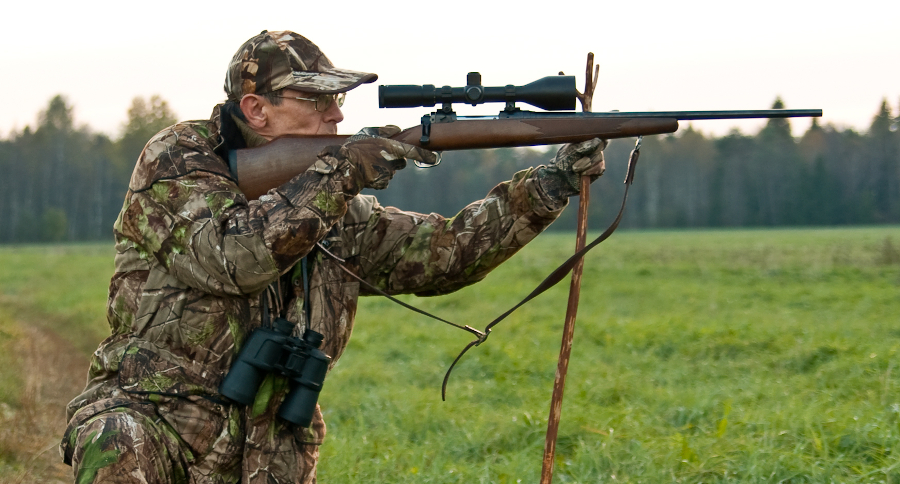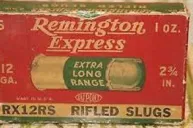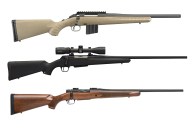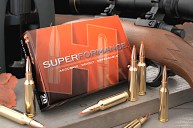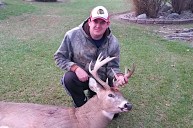How far should you be practicing your shots before hunting season?
Deer hunting is one of the most challenging big game pursuits there is. These wild animals are smart, elusive and they have a great sense of smell that gives them a real edge over hunters.
That's why so many hunters spend tons of time at shooting ranges trying to pinpoint their maximum distance before deer season. The more you practice, the more confident you will be and the greater your odds will be for a clean and ethical kill.
This begs the question; how far out should you be practicing your shots? Well, there's more to it than just some arbitrary number, so let's dive into the topic in depth.
For the sake of simplicity, we won't talk too much about angle compensation from treestands or factoring in the wind. Let's just focus on distance and what it means for deer hunters.
For shooting accessories, visit walmart.com.
What type of environment are you hunting?
Some newer hunters never even consider this before they head out for the first time, but it plays a factor. I live in southwest Michigan, which is part of Zone 3. This is also known as the "shotgun zone" because for years centerfire rifles were not allowed for hunting deer.
Why? Well, it's because this part of the state is more densely populated than the north. At some point in Michigan's past, it was determined most rifles were simply too dangerous to be used here because of the distance the rounds can travel. There were concerns shots fired from a rifle would have a greater risk of hitting homes or crossing public roads. Stuff like that.
In recent years, Michigan and several other states that were previously shotgun-only are now allowing straight wall centerfire pistol cartridge rifles in calibers like .44 or .357 Magnum. Michigan isn't alone in this, as Iowa, Indiana, Illinois and Ohio have similar rules limiting rifle use. Others have opted for muzzleloading rifles to give themselves a bit more range. So, before you even think about distance, look at the hunting regulations and consider legality.
Speaking of my part of Michigan, we have a healthy mix of whitetail environments. There is plenty of agriculture and open fields, but there are also stands of old forest and in my hunting area, thick swamps that are flooded most of the year.
When I hunt deer back in those woods and swamps, most shots are from a ground blind. They're usually up close and personal. I've used a simple Remington 870 shotgun for years. Some people like to shoot further, but I'm comfortable to about 50 yards with it.
The buck I shot last season was a 25-yard chip shot in an open field with that gun. In that case, I didn't really need any more gun than that.
However, let's say you're hunting a huge, open plot of public land or a wildlife management area in South Dakota or the Nebraska plains, where there are far fewer trees. Being able to reach out at long range isn't just helpful, it might be a necessity during firearms season if there's a lack of places to ambush animals.
Basically, just think about the area you're hunting and what natural barriers there may be. If you're hunting a small plot of private land, you might also want to limit your shots to avoid bullets going onto the neighboring property.
Personal comfort level
I feel like too many hunters, especially newbies, try to over-exert themselves on the range. I wish this was something that was hammered home more in hunter education, but hunters should not feel bad about passing shots they're not comfortable with.
Sure, I know that my Remington 870 I mentioned earlier can reach out to 100 yards or more with a slug, but I've never tried it. In fact, I only have one shot on a deer in my hunting career over 100 yards, and that was with a muzzleloader that shoots much flatter.
When you're out at the range, pay attention to the size of your groupings. Don't feel like you need to impress anyone with fancy shooting. Find a comfortable range and then stick with it. If your comfort level is 70 yards to start, stick with that.
Don't feel like just because you're shooting a .308, that you need to be reaching out to insane distances to shoot a deer. Your first and only focus should be on tight groups that will bring a deer or other game animal down quickly and humanely.
Trying too hard to push your own personal limits in the field can lead to lost, wounded deer and the frustration of an empty freezer.
We're not saying you shouldn't experiment with longer ranges while practicing, because you should. However, you also shouldn't try to force groupings at a longer range. This is especially true if you're using archery equipment.
Find a maximum range you're good at and that makes sense for your hunting area, and you'll have a lot more confidence in making the shot once you head afield.
Variables from your weapon
Technically, you can kill a deer with just about any sort of weapon. People have killed deer and moose with pellet guns before. However, just because you can does not mean that you should. This applies to the distances you're shooting too.
If you really start diving into it, you'll hear a lot of talk about the minimum amount of kinetic energy needed to kill a deer. Depending on who you ask, you'll hear anywhere from 1,000 to 1,400 pounds of foot energy as a minimum. It's worth a look because some rounds may drop below that threshold the farther you get from your target.
However, you'll find many experienced big game hunters consider penetration and bullet expansion to be a bigger factor here. This is where some experimenting may come into play to find a bullet that groups and expands well.
Even then, there can be more headaches because some guns, especially handguns, can be quite picky on ammo, limiting your range even more. One round may penetrate well but have horrible range while another may shoot flat as a pancake at 200 yards, but it doesn't expand well on impact. Do your homework on the weapon you're using, find out what's working for people and from there you can probably more quickly come up with an effective range to focus your practice.
Bowhunters have more of a challenge with these variables because things like arrow weight and broadhead type drastically affect the speed and accuracy of an arrow at range. More importantly, it's vital to know how much penetration and cutting power you're getting from your setup.
A crossbow is always going to have more power and a slightly longer effective range than a compound or long bow; that's just physics. However, arrows lose their energy quickly. Just because you can hit a target at 100 yards with a crossbow doesn't mean you can kill a deer at that distance. In fact, I've seen manufacturers recommending you stay within 50 yards for the most humane kills with a crossbow.
Keep in mind that most deer taken in archery season every year die more from the blood loss caused by slicing through vital organs and arteries than the pure power of the arrow. I've always made shot placement a larger focus of my practice sessions than distance. I always try to limit myself to about 30 yards with a compound bow. Beyond that, my groups tend to get too large for me to be comfortable. That's just my own personal setup, your mileage will vary.
Don't just practice one distance
If you're looking for recommendations, I generally practice most of my shots in the 15-25 yard range for archery gear and 30-100 yards for firearms. However, those are just MY ideal distances that I'd like to shoot deer at. One mistake many people make is that they spend a ton of time focusing only on the maximum distance they can shoot and end up neglecting yardages in between.
All hunting is unpredictable, and some people get caught off guard when a deer shows up closer than they expected. For instance, in 2003 I focused a lot on longer distances with my shotgun in practice, only to shoot the biggest buck of my life at only 10 yards. Fortunately, I was ready for that, but I'm glad I didn't focus all my practice on the outer limits of my range.
Practicing different distances is especially important for bowhunters. That deer isn't always going to step into a perfect spot for your 20-yard pin. It may be standing at 22 or 23 yards instead.
Practice shooting at odd yardages and move your target to a variety of angles to represent different shots like broadside and quartering away. If you don't have a rangefinder, mark off the different distances with rocks, markers or a bit of fluorescent orange tape to remind you of the distances in your hunting spot.
Preparing for deer hunting can be more stressful than other forms of shooting. There is simply less room for error here than there is with small game, wild turkey, waterfowl or other game birds.
The more you practice with your weapon of choice, the more confident you will become and the better prepared you will be for any hunting scenario you find yourself in.
That means more deer on the ground, antlers on the wall and venison in the freezer!
For more outdoor content from Travis Smola, be sure to follow him on Twitter and check out his YouTube channel.
NEXT: HOW TO RUIN A DEER HUNTING SPOT
WATCH
